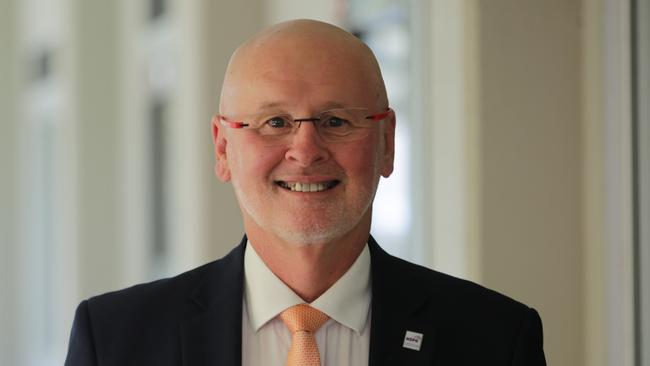Teenage truancy linked to poverty
Teenagers in poor suburbs are twice as likely to skip school as students from affluent homes, as truancy and suspensions fuel a wave of youth crime.

Teenagers in poor suburbs are twice as likely to skip school as students from affluent homes, as truancy and suspensions fuel a wave of youth crime.
Three-quarters of students in some of Australia’s most disadvantaged schools missed at least a month of lessons last year.
High school principals are warning of the link between record rates of absenteeism and growing community concern over crime.
In Alice Springs, where the crime crisis has warranted a visit from Prime Minister Anthony Albanese, 84 per cent of students attending the NT government-run Centralian Middle School were absent for more than 10 per cent of school days in 2022.
Australian Secondary Principals Association president Andrew Pierpoint warned that family dysfunction was ruining children’s education.
He said children needed good role models who value education.
“We’ve got lifelong social welfare families in some suburbs and the kids aspire to be on the dole like their parents,’’ he said.
“Schools work hard to get kids to school but there’s only so much they can do short of handcuff them to a chair, which would be outrageous. This problem is going to require a substantial whole-of-community approach for the next 10 or 20 years, and not be dumped at the schools’ feet.
“You can’t teach kids unless you’ve got them in front of you.’’
Across Australia, absenteeism levels have doubled since the start of the pandemic, with just over half of all students missing the equivalent of a month of education during 2022 – down from one-third of students in 2019.
Three-quarters of First Nations students missed at least a month of schooling last year – up from 50 per cent in 2019.
Data from the Australian Curriculum Assessment and Reporting Authority shows a staggering difference between rich and poor schools, in terms of absence due to illness or truancy.
The clear link between poverty and school disengagement is evident in western Sydney, where federal Education Minister Jason Clare became dux of his high school. At Bankstown Senior College, 87 per cent of students live in the poorest 25 per cent of families.
Two out of three students missed out on at least a month of schooling last year – up from 42 per cent in 2019.
At Airds High School in Campbelltown, where three-quarters of students live in poverty and 27 per cent are Indigenous, just one in four students turned up to school 90 per cent of the time.
In contrast, teenagers attending Killara High School on Sydney’s affluent north shore – where two-thirds of students live in the wealthiest 25 per cent of families – were more likely to go to school.
At Box Hill in Melbourne – one of Australia’s most expensive suburbs – the absentee level was just 31 per cent.
In contrast, 73 per cent of students in Queensland’s low-income city of Ipswich missed at least a month of school.
Mr Clare said on Tuesday that the widening attendance gap between rich and poor students was “a serious issue”.
“That’s why I have put this on the agenda for the next meeting (of state and territory education ministers) next month,’’ he said.
Child psychologist Michael Hawton, author of The Anxiety Coach, said many students feared going back to school after the pandemic, while others simply preferred to stay home. “Kids who are anxious will avoid challenging situations,’’ he said.
“And it’s extremely rewarding for kids to stay home and be able to stay on their devices all day. Parents don’t want to feel tough or mean, and they don’t want a drama, so it’s got into a bit of a pattern during the pandemic.’’
Professor Linda Graham, of the QUT Centre for Inclusive Education, warned that schools were too quick to suspend or expel children from disadvantaged backgrounds.
She said Aboriginal and Torres Strait Islander students were three times more likely than their classmates to be suspended.
“If you suspend a kid, they’re out in the street and are much more likely to come into contact with the law,’’ she said.
“Indigenous kids in (foster) care and with a disability are the most vulnerable in our country … but the most likely to be suspended. That’s how kids go missing from the (education) system.’’




To join the conversation, please log in. Don't have an account? Register
Join the conversation, you are commenting as Logout